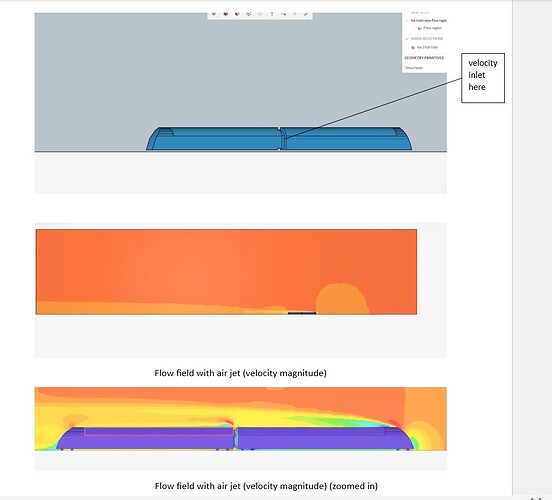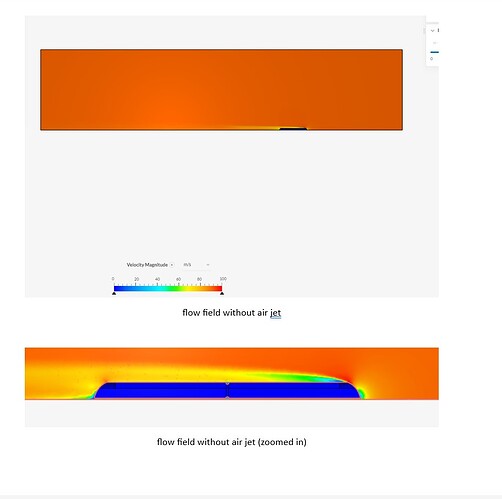Hi, I’m running a project trying to reduce the drag effect of the inter car gap cavity on a high speed train. I’m trying to add a second velocity field in the inter car gap to simulate an air jet blowing air over it to stop the air around the train from going into the cavity. I was wondering if someone could tell me if i have modelled this secondary velocity flow correctly,( i just literally added a velocity inlet as shown) or if there’s something I’m missing because it doesn’t seem to reduce the drag and if anything is increasing it.
My project supervisor seems to think that the air jet idea should reduce the overall drag on the train.
I don’t think there’s anything wrong at all with the rest of my model because my supervisor has looked at it before I added the “air jet” and said everything’s fine. I have included some pics below.
Any help given would be greatly appreciated.
Many thanks
Suleman.

